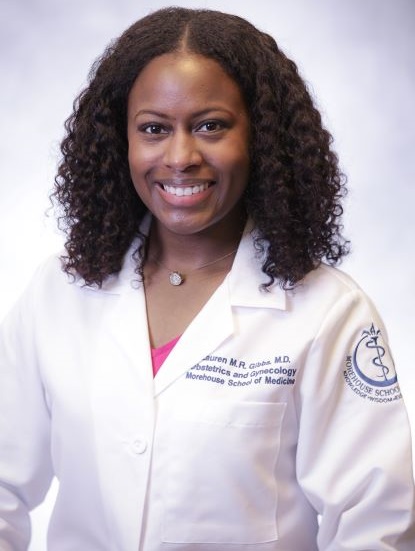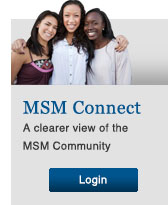Lack of Racial, Ethnic Diversity in Cryopreserved Donor Sperm in the United States
MSM Obstetrics and Gynecology resident Lauren Gibbs, MD, led a new study that examined data from the 14 of the largest donor banks in the US.
 Lauren Gibbs, MD
Lauren Gibbs, MD
MSM Obstetrics and Gynecology Resident
By Meg Barbor, Medscape
Commercial sperm banks in the United States lack racially and ethnically diverse donors, potentially limiting family-planning options for patients in traditionally underserved populations, according to a new study presented at the 2023 annual meeting of the American Society for Reproductive Medicine (ASRM).
"This really highlights the need to identify barriers to increase recruitment of these donors so that we can support family-building for all populations," said Lauren Gibbs, MD, a resident in the Department of Obstetrics and Gynecology at Morehouse School of Medicine in Atlanta.
Gibbs and her colleagues compared the racial and ethnic makeup of sperm donors from online and self-reported profiles at 14 of the largest donor banks in the United States for March and April of 2023. Historical data were pulled from two large, national banks. The investigators compared these data to census estimates from 2021 for men between the ages of 18 and 44 years.
Donors who identified as Hispanic (10.9%) or Black (3.3%) were significantly underrepresented as compared to the US population, of which Hispanic men compose 22% and Black men make up 13.3%.
Asian donors were overrepresented, making up 21.9% of the donors but only 6.5% of the US population. White donors were proportionately represented in relation to national demographics, making up 56.6% of the donors and representing 55% of the US population, according to the researchers. None of donors identified as Native/Hawaiian/Pacific Islander or American Indian/Alaskan Natives; these groups represent 0.22% and 0.79% of the US population, respectively.
"Next steps will be figuring out why this is happening and how to address it," said Valerie L. Baker, MD, director in the Division of Reproductive Endocrinology and Infertility at Johns Hopkins Medicine in Lutherville, Maryland, who was not involved in the study.
The study sheds light on the need to identify and address the barriers that discourage potential donors from underrepresented groups from participating in sperm donation, according to Kimball Pomeroy, PhD, scientific director at the World Egg and Sperm Bank in Scottsdale, Arizona.
"Sometimes there are inhibitors of different ethnic groups to want to act as sperm or egg donors, so trying to understand if that's the case is important; but I'm sure a lot of it is also related to access," Pomeroy, who was not part of the study team, told Medscape Medical News.
Longitudinal data from the two national donor banks did not indicate any significant increase or decrease in donation trends across the 5-year period from 2018 to 2022, highlighting the persisting issue of representation disparities. Gibbs said strategies need to be developed to increase recruitment of donors from underrepresented groups.
Increasing the diversity of the donor pool will ultimately support family-building options for all patients, according to Gibbs.
Funding for the study was provided by the EMD Serono REI Diversity Fellowship Grant. Gibbs reports no relevant financial relationships.
American Society for Reproductive Medicine 2023 Scientific Congress and Expo: Abstract session ART (1 of 5). Presented October 16, 2023: https://www.fertstert.org/article/S0015-0282(23)01116-0/fulltext

